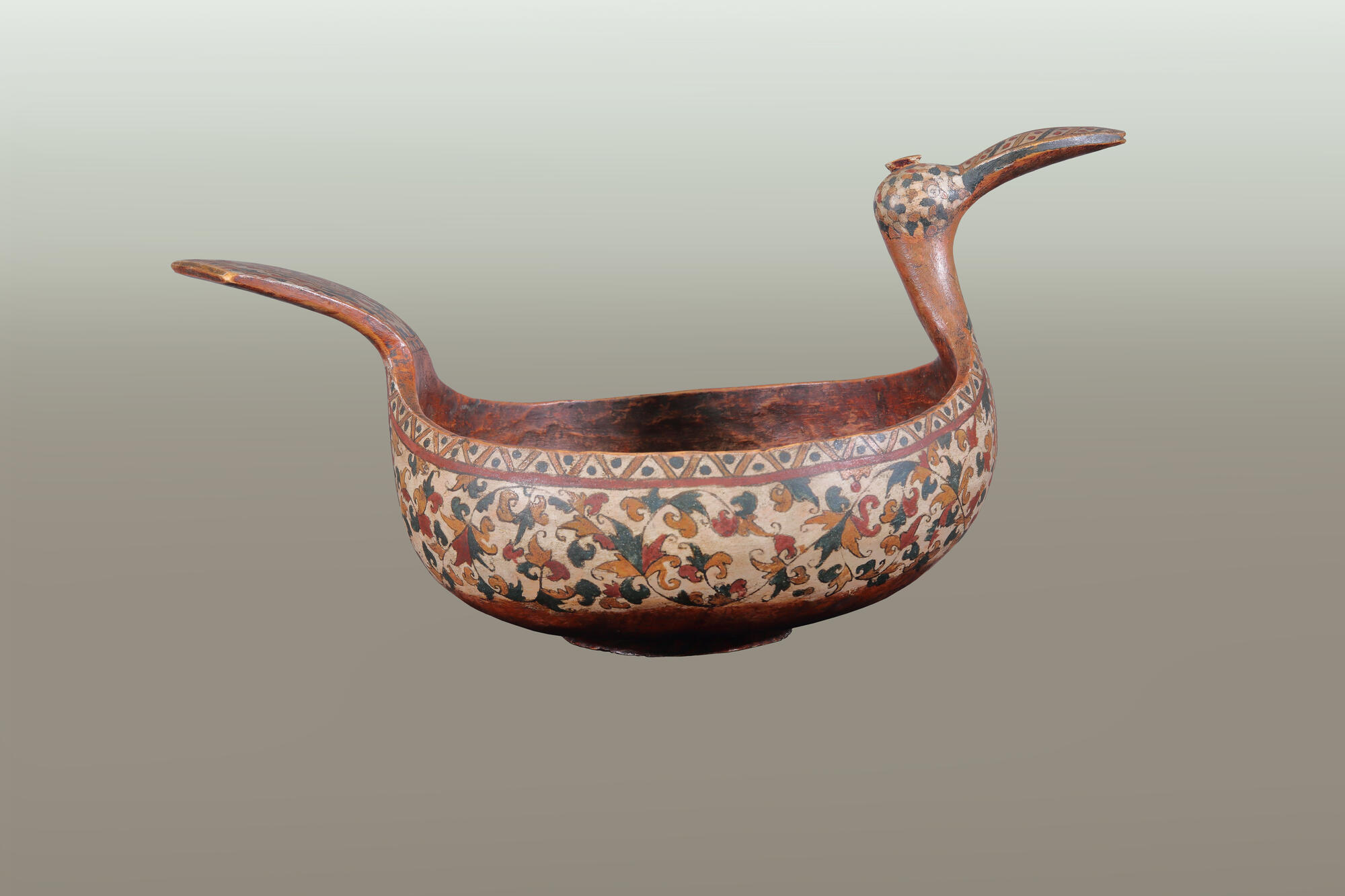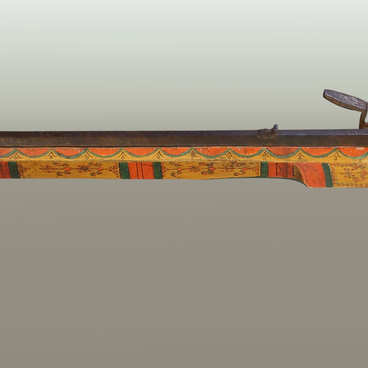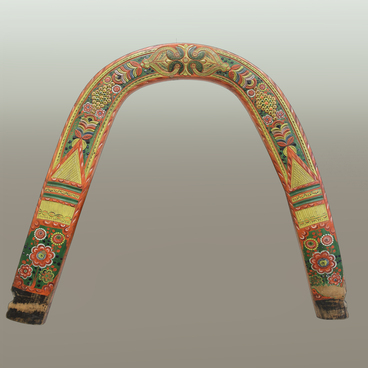A skobkar (skopkar) is a wooden ladle with two handles. It was often shaped like a boat or a water bird. The exact origin of the name is unknown, but various experts associate it with the outdated names of the chiseling technique, as well as with the name of the part of the tree, from which the kovsh, or ladle, was made. The kovsh-skobkar that was shaped like a water bird was a traditional wooden vessel used by the peoples who inhabited Russia’s vast forests.
The body of this unique exhibit is decorated with geometric and floral patterns, based on interlacing scrolls and spear-shaped leaves and flowers on a white background. The painted images are surrounded by an outline. The combination of red, yellow and green shapes emphasized by a black outline is traditional for Permogorye — arguably, the most ancient Severodvinsk center of decorative painting.
Permogorye painting owes its name, which has become a scientific term in the field of folk art, to the place of its origin — the wharf on the Northern Dvina that still exists today. The artisans from nearby settlements painted distaffs and wooden vessels: ladles, mugs, boxes, baskets, and bowls called “bratinas”.
In addition to traditional floral and geometric patterns, Permogorye craftsmen depicted numerous genre scenes when decorating wooden tableware. Scenes of tea drinking and home parties were the most popular ones. The peasant artist Yakov Yarygin, one of the best masters of the first half — the middle of the 19th century, created a wide range of genre images. Researchers believe that when Yarygin was decorating wooden vessels with paintings, he simultaneously depicted the events of his own life.
Permogorye painting was discovered in the middle of the 20th century. The largest Russian museums — the Zagorsk Museum-Reserve, the State Historical Museum, and the State Russian Museum — arranged scientific expeditions and identified centers of white-background graphic paintings on the Northern Dvina, including Permogorye. At that time, entire dynasties of folk artists were singled out — the Yarygins, the Khripunovs, and the Misharins.
The body of this unique exhibit is decorated with geometric and floral patterns, based on interlacing scrolls and spear-shaped leaves and flowers on a white background. The painted images are surrounded by an outline. The combination of red, yellow and green shapes emphasized by a black outline is traditional for Permogorye — arguably, the most ancient Severodvinsk center of decorative painting.
Permogorye painting owes its name, which has become a scientific term in the field of folk art, to the place of its origin — the wharf on the Northern Dvina that still exists today. The artisans from nearby settlements painted distaffs and wooden vessels: ladles, mugs, boxes, baskets, and bowls called “bratinas”.
In addition to traditional floral and geometric patterns, Permogorye craftsmen depicted numerous genre scenes when decorating wooden tableware. Scenes of tea drinking and home parties were the most popular ones. The peasant artist Yakov Yarygin, one of the best masters of the first half — the middle of the 19th century, created a wide range of genre images. Researchers believe that when Yarygin was decorating wooden vessels with paintings, he simultaneously depicted the events of his own life.
Permogorye painting was discovered in the middle of the 20th century. The largest Russian museums — the Zagorsk Museum-Reserve, the State Historical Museum, and the State Russian Museum — arranged scientific expeditions and identified centers of white-background graphic paintings on the Northern Dvina, including Permogorye. At that time, entire dynasties of folk artists were singled out — the Yarygins, the Khripunovs, and the Misharins.


